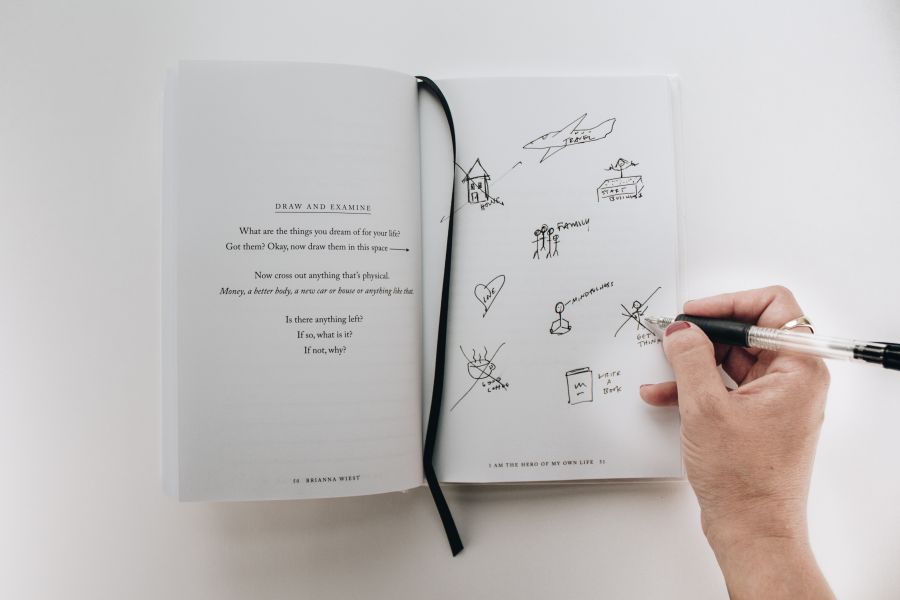仁爱英语九年级教案
一.教材分析
1.教材的地位和作用
本说课是九年级《go for it》第九单元“When was it invented?”本单元涉及内容是本书当中比较重要的一部分。被动语态结构及运用是教学中一个难点和重点,也是学生比较不容易理解的部分,因为它是建立在各种时态之上的。
另外通过对我们熟悉经常使用的发明物的历史来开阔眼界,丰富学生的阅历,使学生养成勤于思考,善于总结的好习惯。
2.教学目标
1)知识目标 扩容新单词,提高阅读能力。理解和良好运用被动语态。
2)技能目标 能谈论重要发明的历史及用途,能针对各项发明的用处及特点,发表自己的看法,并说明理由。
3)情感目标 使学生懂得人类的科学发明创造了丰富的物质文明。培养学生的创造发明的能力和愿望
3.教学重点 掌握一般过去时的被动语态
4.教学难点 弄清主动语态与被动语态的差异,通过练习和运用加以巩固
二.学情分析
1.初中生的抽象能力较低,形象思维能力强。但注意力容易分散。本单元通过多媒体课件和教师亲和力的语言,增强兴趣和注意力。
2.初中生的学习心理特点
1)兴趣 对英语普遍感兴趣,求知欲盛。
2)记忆 对刺激记忆手段多的知识记忆深刻,遵从记忆规律。
3)评价 主要通过他人评价初步形成对自己的评价,所以很在乎他人的评价。同时自我意识不断增强。因此在本课教学过程中,注意采用任务型教学为主,通过任务和不同的评价方式,提高学生参与意识。
3.初三上学期学生有较明确的学习动机和态度。本单元通过发明为载体,各种发明和发明家激励学生求知的欲望。
三.教法渗透
1、教学设计思路与教材处理:
《新目标英语》中的具体语言目标是通过各种各样的Tasks来实现的;学生需要运用具体而特定的行动来完成一定的交际任务。整个教学过程中,各种语言结构与语言功能与不同的学习任务有机的结合。任务活动所谋求的效果不是一种机械的语言训练,而是侧重在执行任务中学生自我完成任务的能力和策略的培养;重视形式在完成任务过程中的参与和在交流活动中所获得的经验。因此本节课我将始终引导学生通过完成具体的任务活动来学习语言,让学生为了特定的学习目的去实施特定的语言行动,通过完成特定的交际任务来获得和积累相应的学习经验,让学生在用中学,在学中用。
2、教学原则
l 活动性原则 提倡学生主动参与,体验,交流,合作,探究等多种学习。
l 合作性原则 以学生为主体,师生合作,生生合作,体现教与学的互动,交往。
l 任务型原则 任务驱动—激发动机;任务完成—激励学习积极性;执行任务—培养责任 心和合作精神。
l 情感性原则 激发学生学习英语的兴趣和始终保持良好的学习情绪。
3、教法运用:
本单元主要采用任务型教学
在本课的任务型语言教学中,我将依据课程的总体目标并结合教学内容,创造性地设计贴近学生生活实际的任务活动,吸引和组织他们积极参与,使学生通过观察、思考、讨论、交流和合作等方式,在一种自然、真实或模拟真实的情境中体会语言、掌握语言的应用。
4.教学手段
1) 多媒体辅助:使用自制的课件,使抽象的语言变得直观,为学生运用英语进行交际创设情景,实现师生互动,生生互动和人机互动的多向交流。
2)非测试性评价:传统的评价观念的出发点是学科本位,只重学科,不重学生发展。 要体现新课程标准的实施效果,评价体系应该“正确反映外语学习的`本质和过程,满足学生发展的需要”。为了达到这一目标,唯有重视形成性评价,充分发挥其积极作用,促进新的评价体系的形成。因此,本课我将各种活动设计成小组活动并开展小组竞赛和填写课堂自我评价表等非测试性评价手段,帮助学生学会自主学习,学会与人合作,培养创新意识以及具备科学的价值观。
四、学法指导
新制定的《英语课程标准》把“培养学生学习英语的兴趣,树立自信心,培养良好学习习惯和形成有效策略,发展自主学习和合作精神”放在了首位。依据课改的精神,我从以下几个方面对学生进行学法指导。
1、学习方法的指导
培养学生观察力,想象力,记忆力以及思维能力。用生动的课件调动学生的感官进行听说读写的训练。
2、学习积极性的调动
我在教学过程中创造一种开放的,和谐的,积极互动的语言氛围,把课堂变成有声有色的舞台,让学生在乐中学。
3、学习能力的培养
通过连贯的听说读写,游戏,竞赛等,培养学生的交际能力,发展他们的思维能力。
4、学习策略的指导
本节课将在课堂活动中把学生分成四人小组的学习小组,让他们围绕着课堂任务分工合作,在活动中相互探讨、相互交流、相互合作,从而获得知识、技能和情感体验,发展他们的能力。创建开放式,探究式的课堂,有意识渗透学习策略的训练。我让学生观察课件画面,回答问题,让学生学会使用认知策略;让学生表演对话,实现交际策略;引导学生交际,主动练习和实践,是调控策略的体现。充分利用多媒体,录音,卡片等是资源策略。
五.教学效果预测;
1. 能够掌握被动语态,并运用到一定的语言环境。
2. 通过多媒体和任务的完成学生会突破难点,产生一定创造精神。
3. 能完成教学目标,调动学生学习热情。
六.课堂教学过程:
Ⅵ.Teaching Procedures
Step Ⅰ Lead-in (2 minutes)
We have inventions everywhere .Inventions make us live easily and happily. Without inventions,our lives will be much more difficult. Today, we will know about a few inventions and talk about the history of them.
Show the pictures of five inventions on the screen: a car,a Tv set, a telephone, a calculator and a computer.
T:Now look at these things.What are they?In what order do you think they were invented? Number them(1-5) (1=first,5=last)
Volunteers report the answes.
S1:I think the calculator was invented before the computer.
S2:Idon’t think so. I think the calculator was invented after the computer.
Step Ⅱ 1a
This activity reviews vocabulary and introduces new vocabulary which can be used to talk about inventions.
Read the inventions to the students.
Call the students' attention to the five pictures. Tell thestudents that all of these things were invented in the last 150 years. Point to each picture and let the students tell what it is.
Write the names of the five inventions on the blackboard.
computer, car, calculator, telephone, TV set
Have several different students guess and write the dates on the board.
Ask the class to repeat the questions and answers like this.
T: When was the computer invented? Class repeat.
Ss: When was the computer invented?
T: Good. Now Tom, what is your guess?
S1: 1965.
T: OK. Tom, repeat after me. The computer was invented in 1965.
T: Class, please repeat.
Ss: The computer was invented in 1965.
Repeat the process with several different inventions.
Tell the children that they will find out the real dates after they complete the lesson.
After that, ask the students the questions below:
Questions:
1.Which one do you think is the oldest?
2.Which one is the newest?
3.Which one do you think is the oldest or the first invention?
4.Which one is the newest or last invention?
Ask different students to answer the questions.
Have the students look at the example conversation in the box. Ask two students to read this conversation to the class.
A: I think the telephone was invented before the car.
B. Well, I think the telephone was invented after the car.
Read the instructions again to the students. Remind them to remember the inventions from first to last.
Then have the students talk about the five inventions in groups of four, using the sample conversation as a model.
Ask several groups to tell the class their answers. The rest of the class listen to them and show they have different answers by raising their hands.
In the next activity you will find out the real dates.
Step Ⅲ 1b
This activity gives students practice in understanding the target language in spoken conversation.
Get the whole class to read the instruction together.
Call the students' attention to the five inventions in the picture. Ask five students to say the names of them.
Then ask them to see the five dates with a blank line in front of each.
We'll listen to a girl and a woman talking about the five inventions. They will talk about when they were invented. Listen carefully and match the inventions and the dates. Write the correct letter in front of each date as the sample given. Ask them to have a look at the sample answer. Tell them the answer in front of 1876 is d. That means that the telephone, which is letter d, was invented in 1876. Play the recording the first time. The students only listen and try to catch the main idea.
Play the recording a second time. Let the students match the inventions and the dates. Check the answers by asking several to say the answers to the class.
If some of the answers are hard to get for the children, tell them not to worry and they will make it next.
Then play the recording again. Pause after each sentence and let the students repeat. For some difficult sentences, get the students to repeat several times. Be sure that they make everything clear.
Answers
d 1876 a 1885 e 1927 c 1971 b 1976
Step Ⅳ 1c
This activity provides guided oral practice using the target language.
Read the instructions and point to the list of dates in Activity 1b.
You will be talking about the dates things were invented with a partner.
Call the students' attention to the example in the box. Ask a pair of the students to read this conversation to the class.
SA: When was the telephone invented?
SB: I think it was invented in 1876.
Write the conversation on the blackboard. Then get thestudents to practice in pairs, using the information in Activity 1b. Tell them to do it like this:
Student A, covers the dates. Students B, asks Student A when the things in the picture above were invented. Then change roles and practice again.
Ask several pairs to share their conversations with the class.
Step Ⅴ Summary
In this class, we've learned to talk about the history of inventions with passive voice. We've also done some listening practice in understanding the target language in spoken conversation. And we've done much oral practice, using the target language.
Step Ⅵ Homework
1.Write out two conversations in Activity 1a.
2.Write out two conversations in Activity 1 c.
Step Ⅶ Blackboard Design
二.学情分析
1.初中生的抽象能力较低,形象思维能力强。但注意力容易分散。本单元通过多媒体课件和教师亲和力的语言,增强兴趣和注意力。
2.初中生的学习心理特点
1)兴趣 对英语普遍感兴趣,求知欲盛。
2)记忆 对刺激记忆手段多的知识记忆深刻,遵从记忆规律。
3)评价 主要通过他人评价初步形成对自己的评价,所以很在乎他人的评价。同时自我意识不断增强。因此在本课教学过程中,注意采用任务型教学为主,通过任务和不同的评价方式,提高学生参与意识。
3.初三上学期学生有较明确的学习动机和态度。本单元通过发明为载体,各种发明和发明家激励学生求知的欲望。
三.教法渗透
1、教学设计思路与教材处理:
《新目标英语》中的具体语言目标是通过各种各样的Tasks来实现的;学生需要运用具体而特定的行动来完成一定的交际任务。整个教学过程中,各种语言结构与语言功能与不同的学习任务有机的结合。任务活动所谋求的效果不是一种机械的语言训练,而是侧重在执行任务中学生自我完成任务的能力和策略的培养;重视形式在完成任务过程中的参与和在交流活动中所获得的经验。因此本节课我将始终引导学生通过完成具体的任务活动来学习语言,让学生为了特定的学习目的去实施特定的语言行动,通过完成特定的交际任务来获得和积累相应的学习经验,让学生在用中学,在学中用。
2、教学原则
The First Period
教学内容:新目标九年级Unit 9 When was it invented?第一课时
一.教材分析
1.教材的地位和作用
本说课是九年级《go for it》第九单元“When was it invented?”本单元涉及内容是本书当中比较重要的一部分。被动语态结构及运用是教学中一个难点和重点,也是学生比较不容易理解的部分,因为它是建立在各种时态之上的。
另外通过对我们熟悉经常使用的发明物的历史来开阔眼界,丰富学生的阅历,使学生养成勤于思考,善于总结的好习惯。
2.教学目标
1)知识目标 扩容新单词,提高阅读能力。理解和良好运用被动语态。
2)技能目标 能谈论重要发明的历史及用途,能针对各项发明的用处及特点,发表自己的看法,并说明理由。
3)情感目标 使学生懂得人类的科学发明创造了丰富的物质文明。培养学生的创造发明的能力和愿望
3.教学重点 掌握一般过去时的被动语态
4.教学难点 弄清主动语态与被动语态的差异,通过练习和运用加以巩固
推荐文章
河南高考排名195560左右排位理科可以上哪些大学,具体能上什么大学2024-06-08 12:22:13
吉林外国语大学和湘潭大学兴湘学院哪个好 附对比和区别排名2024-06-08 12:17:15
江西工商职业技术学院在黑龙江高考历年录戎数线(2024届参考)2024-06-08 12:13:44
甘肃高考排名5480左右排位理科可以上哪些大学,具体能上什么大学2024-06-08 12:10:50
四川文化艺术学院和天津城建大学哪个好 附对比和区别排名2024-06-08 12:07:58
江西高考排名71510左右排位理科可以上哪些大学,具体能上什么大学2024-06-08 12:05:17
姑娘出嫁婚宴主持词2023-08-10 08:32:45
晏子使楚课文教案设计2023-08-21 21:38:51
老年人生日主持词范本2023-08-11 15:00:31
服装大赛主持人主持词2023-08-20 15:34:34
晏子使楚课文教案设计2023-08-21 21:38:51
日月潭 教案2023-08-21 02:44:07
大班的手指游戏教案2023-08-19 11:55:20
中班科学公开课教案及教学反思和电池做游戏2023-08-10 20:35:16
找最小公倍数教学教案2023-08-12 04:35:17
爬天都峰优秀教案设计2023-08-25 06:33:44





